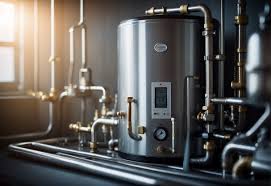Tanks are vital in various industries, including food and beverage, pharmaceuticals, and chemical processing. Properly maintaining these tanks is crucial to ensure their longevity and optimal performance. Neglecting maintenance can lead to costly repairs, downtime, and even safety hazards. This comprehensive guide provides essential tips on how to maintain tanks effectively, focusing on best practices that extend the lifespan of your tanks.
Whether you are dealing with storage, processing, or beverage tanks, following these maintenance strategies will help you keep your equipment in top condition for years.
1. Regular Cleaning
Keeping your tanks clean is the foundation of adequate maintenance. Regular cleaning prevents the buildup of residues, contaminants, and microbial growth that can compromise the tank’s integrity. For Beverage Tanks, for example, thorough cleaning ensures the quality and safety of the stored liquids. Utilising CIP (Clean-In-Place) systems can streamline the cleaning process, providing thorough and efficient cleaning without disassembly.
2. Inspect for Wear and Tear
Regular inspections are crucial for identifying signs of wear and tear, such as cracks, corrosion, or leaks. Conduct visual inspections and use non-destructive testing methods to detect any hidden issues. Early detection allows for timely repairs, preventing minor problems from escalating into significant failures. For high-quality beverage tanks, check out Feldmeier’s beverage tanks.
3. Monitor and Maintain Protective Coatings
Many tanks are equipped with protective coatings to prevent corrosion and other forms of damage. Regularly monitor the condition of these coatings and reapply them as needed. Ensure that the coatings are compatible with the stored materials to prevent chemical reactions that could degrade the tank’s surface.
4. Implement a Preventive Maintenance Schedule
A proactive approach to maintenance involves implementing a preventive maintenance schedule. This includes routine inspections, cleaning, lubricating moving parts, and timely replacement of worn components. Keeping detailed records of maintenance activities helps track the condition of the tanks and plan future maintenance tasks effectively.
5. Control Environmental Factors
Environmental factors such as temperature, humidity, and exposure to harsh chemicals can affect the longevity of tanks. Ensure that tanks are stored and operated in environments that minimize these risks. For instance, temperature-controlled environments can prevent thermal expansion and contraction that might cause structural damage.
6. Ensure Proper Ventilation
Proper ventilation is essential to prevent pressure or vacuum buildup within the tanks, which can lead to structural damage. Installing pressure relief valves and regularly checking their functionality can help maintain appropriate pressure levels. This is particularly important for beverage tanks to maintain the quality and carbonation levels of stored beverages.
7. Use Quality Materials and Components
The quality of materials and components used in tank construction significantly affects their longevity. Invest in tanks made from high-quality materials resistant to corrosion, abrasion, and chemical reactions. Regularly check and replace gaskets, seals, and other components to ensure they are in good condition and compatible with the stored substances.
8. Train Personnel
Proper maintenance also involves training personnel on the correct procedures for operating and maintaining tanks. Ensure that employees know the specific requirements of the tanks they are handling. This may include understanding safety protocols, proper sealing systems that utilize ptfe teflon gaskets, rubber seals, and metal-reinforced sealing components to prevent leaks, and recognizing signs of potential issues like seal degradation and compromised connections.
9. Implement Monitoring Systems
Modern technology allows for the implementation of monitoring systems that provide real-time data on tank conditions. Sensors can monitor parameters such as temperature, pressure, and liquid levels, alerting operators to deviations from the norm. This enables prompt corrective actions, reducing the risk of damage and extending the lifespan of the tanks.
10. Plan for Long-Term Maintenance
Long-term maintenance planning involves budgeting for regular maintenance activities, potential repairs, and eventual replacements. Assess the lifecycle of your tanks and plan for upgrades or replacements before the tanks reach the end of their useful life. This proactive approach helps avoid unexpected downtime and ensures continuous operation.
FAQs
How often should tanks be cleaned?
The cleaning frequency depends on the tank type and the materials stored within it. For beverage tanks, cleaning is typically required after each batch or production cycle to maintain hygiene and product quality. Depending on usage and environmental conditions, other tanks may require monthly, quarterly, or annual cleaning.
What are the common signs of tank wear and tear?
Common signs of wear and tear in tanks include visible cracks, corrosion, leaks, and shape or structural integrity changes. Discolouration, unusual odours, and changes in the tank’s performance (such as pressure fluctuations) can also indicate underlying issues that need attention.
Can I perform tank maintenance myself, or should I hire professionals?
While some basic maintenance tasks can be performed in-house, hiring professionals for more complex inspections, repairs, and maintenance activities is often advisable. Professionals have the expertise, tools, and equipment necessary to perform thorough and accurate maintenance, ensuring the longevity and safety of the tanks.
What materials are best for constructing durable tanks?
The best materials for constructing durable tanks depend on the application and stored substances. Stainless steel is a popular choice for its corrosion resistance and strength. Other materials like titanium, fiberglass, and certain plastics may also be suitable for specific applications. Consulting with a manufacturer like Feldmeier can help determine the best material for your needs.
Conclusion
Maintaining tanks for longevity requires a proactive and systematic approach. You can ensure that your tanks remain in optimal condition by implementing regular cleaning, conducting thorough inspections, monitoring protective coatings, and following a preventive maintenance schedule. Controlling environmental factors, ensuring proper ventilation, and using quality materials further enhance the durability and performance of the tanks.
Training personnel and utilizing modern monitoring systems also contribute to effective maintenance practices. For high-quality beverage tanks and expert maintenance advice, consider partnering with Feldmeier Equipment. Their extensive experience and commitment to quality ensure that you receive the best solutions for your specific applications, helping you maintain your tanks for the long haul.




